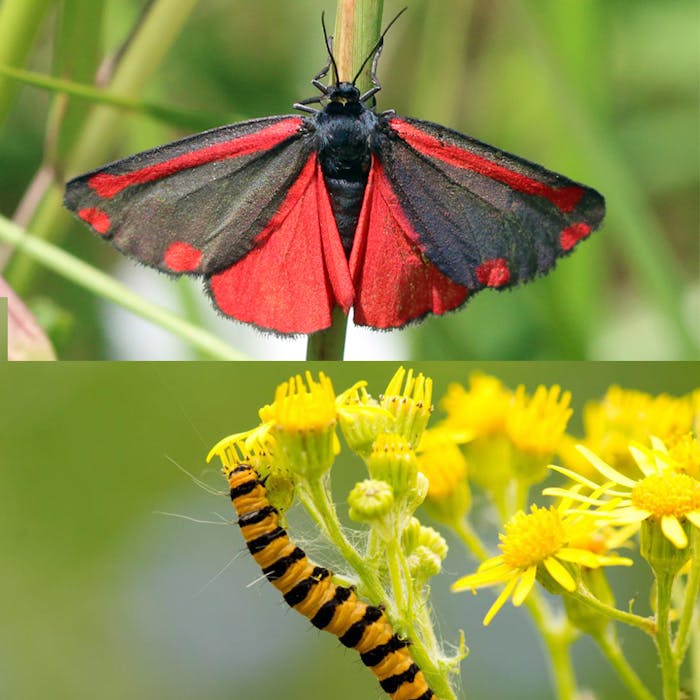
Cinnabar moths and Ragwort - a colourful combination
The Cinnabar is a particularly attractive British moth, brightly coloured with red and black markings, and unlike many other moths, active in the daytime. Its caterpillars are equally distinctive and dependent on the ragwort plant - a bright yellow weed often persecuted as a threat to horses and cattle.
The moth (Tyria Jacobaeae) was named after the bright red mineral ‘cinnabar’ once used by artists as a red pigment for painting.
Cinnabar moths are among over 40 insect species supported by the ragwort plant, which is also an important source of nectar. Ragwort has a cummulative toxic effect and is well known for its potential to poison horses and other livestock if eaten. The growing plant is so bitter and unpalatable that it is usually avoided, but can be a dangerous contaminant of hay. For this reason, attempts are often made to eradicate it from land, to the detriment of the moths and other insects.
Female cinnabars can lay up to 300 eggs, usually in batches of 30 or 60 on the underside of ragwort leaves. The caterpillars feed on the poisonous leaves and flowers of the plant, and can be seen out in the open during the day. They develop bright yellow and black stripes to deter predators.
The poison from the ragwort leaves is stored in the caterpillar's body (and even remains when they are an adult moth). Any birds or other predators that ignore the caterpillar's bright warning sign will be repulsed by how foul it tastes.
The ragwort, which attracts the cinnabar moths and caterpillars, tends to grow in open fields and downland, where significant colonies of the moths can sometimes be seen.
Further reading
Links to external websites are not maintained by Bite Sized Britain. They are provided to give users access to additional information. Bite Sized Britain is not responsible for the content of these external websites.
